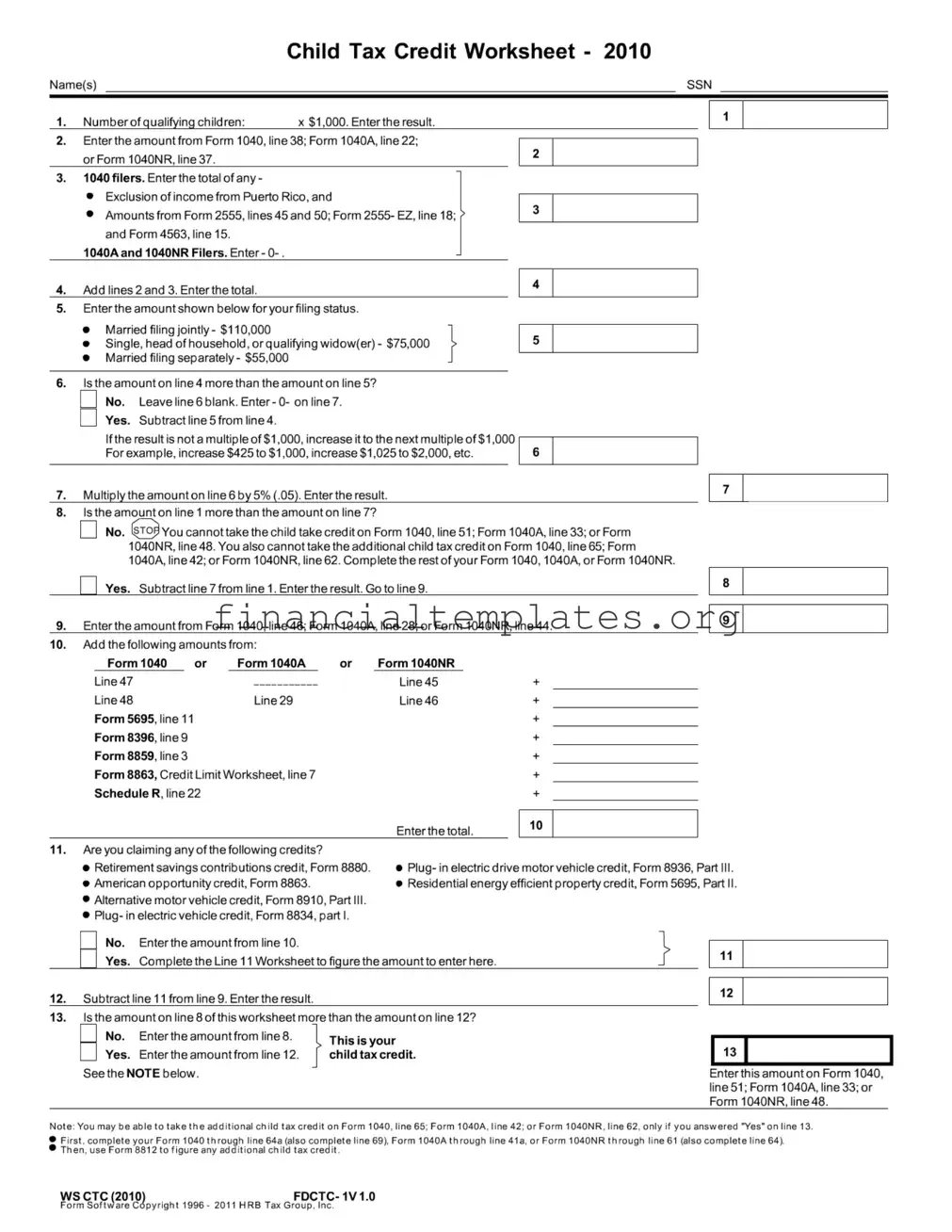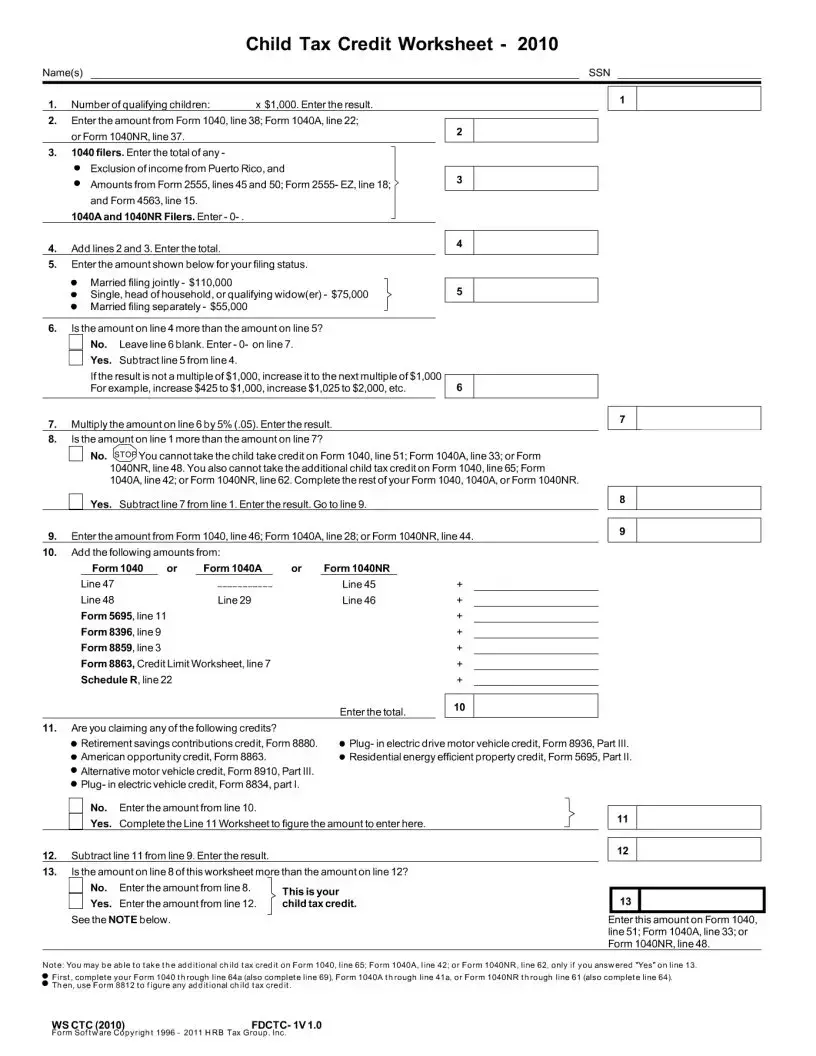For many American families, navigating the intricacies of tax forms can be a daunting task, particularly when it comes to optimizing deductions and credits for dependents. The Child Tax Credit Worksheet form, serving as a crucial tool in 2010, was designed to guide taxpayers through the process of determining their eligibility for the Child Tax Credit—a benefit aimed at offering financial relief to families by reducing their tax liability on a per-child basis. This form begins with the straightforward task of counting qualifying children and calculating a base credit amount. Taxpayers are then instructed to report their adjusted gross income and to adjust this figure by adding specific types of income or deductions that are relevant only to certain types of filers. This adjusted gross figure is then compared against set income thresholds, which differ based on filing status, to determine if the credit amount needs to be reduced. For those with incomes exceeding these thresholds, the form provides a formula to calculate the reduced credit amount. Crucially, the worksheet navigates filers through various other credits and deductions they may be claiming, to ensure these do not overlap or negate their eligibility for the Child Tax Credit. Additionally, it lays out steps for those who find themselves eligible for the Additional Child Tax Credit—a refundable credit for taxpayers who receive less than the full Child Tax Credit amount. The thoroughness of this worksheet underscores the complexity of tax law, while also endeavoring to simplify the process of ensuring families receive every dollar of relief they are entitled to.

